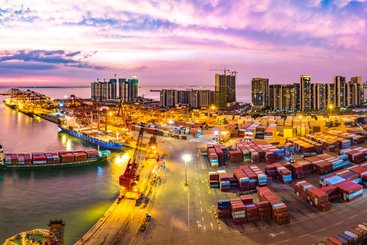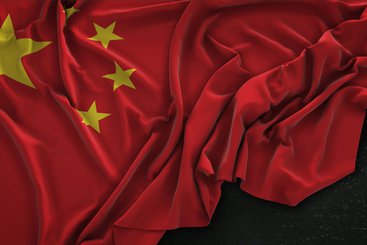China’s rise as a provider of official finance over the last decades takes place outside of the existing frameworks that govern the use of aid and trade under the Organisation for Economic Co-operation and Development (OECD).
Chinese ‘development finance’ to the Global South has largely taken the form of export credit, from two export credit agencies (ECAs). Together, Export–Import Bank of China (Eximbank), the largest Chinese creditor to developing countries, and Sinosure, the biggest provider of risk insurance, have been the backbone of a financing model that has supported not only the export of Chinese goods and services, but also capital – much of this the flag of the Belt and Road Initiative (BRI). However, it is a model that undermines much of the established rules governing OECD members in the use of official finance, blurring the use of aid and the use of trade finance to support domestic firms and advance national interests.
This ODI Insight is the second in a three-part series, 'China’s overseas finance in the era of competition', exploring the rise of – and responses to – China’s distinct model of overseas finance. It dives into the international responses to China’s influence on export credit and development finance, looking at the Organisation for Economic Co-operation and Development (OECD) institutions and European actors. The first Insight examined the critical role of Sinosure in de-risking overseas lending and enabling this overseas finance at scale, with updated figures on its financing trends. The third and final piece will offer the perspective from the United States (US), underscoring policy implications for the U.S. International Development Finance Corporation (DFC) in the context of intensifying bilateral competition.
The last year has seen two momentous shifts: first, in the ‘modernisation’ of the OECD regime around export credit, and second, in the latest reform in the OECD Development Assistance Committee (DAC) rules around development finance and private sector instruments (PSI). These reforms have been driven in part to help OECD official financial institutions to better compete with China. But the consequence is not only growing convergence between China and OECD financing – with climate investment as a key frontier – but a growing blurriness within the OECD, between the institutions of development and trade finance. As mandates blur and ECAs play a greater role in climate financing, greater international coordination can help more efficiently and effectively allocate official financing to support much-needed climate investment in low- and-middle income countries.
A tale of two frameworks
The inexorable rise and scale of Chinese financing has bumped up awkwardly against the voluntary frameworks that have evolved out of the OECD over the last half century. The OECD ‘gentleman’s agreement’ – the Arrangement on Official Supported Export Credits – and the OECD-DAC’s statistical systems on Official Development Assistance (ODA) emerged from a need to govern the use of state-backed official financing instruments, to ensure a ‘level playing field’, and mitigate unfair competition. The Arrangement guides the use and pricing of export credits and guarantees from ECAs tied to national companies or content. Meanwhile, OCED–DAC governs the use of concessional finance from donor agencies and development finance institutions (DFIs) to developing countries: i.e. what can be counted as ODA, and ensuring it is untied to national industries. Together, these norms divide two sides of the same house: one type of public finance for trade, another for aid. In principle, this would preserve the use of scarce concessional funds for developmental motives – and prevent their unfair use in subsidising domestic industries.
The rise of China has shaken these foundations. China, maintaining its developing country status, declined to join the ‘rich country clubs’ of the OECD – the DAC and the Arrangement – refusing to be bound by rules it did not make. But the result is that the terms and modalities of China’s finance undercut OECD financiers. A recent ODI research report highlights the example of the ECA Sinosure, which provides guarantees at highly favourable rates – up to a maximum of 7% of the project value – for its medium- and long-term coverage for overseas projects up to 15 years. In contrast, OECD ECAs to date were subject to a minimum floor in their pricing and could only offer a maximum tenure of 8–10 years. Meanwhile, China Eximbank’s provision of mixed credits – concessional loans at a subsidised rate of 2% – directly levers the state’s aid budget for the purpose of mobilising projects and export promotion.
This would not be such a huge problem were it not for the staggering scale of Chinese investment. In the provision of export credit guarantees – which covers trade, overseas lending and investment – China’s insurance ECA Sinosure’s total portfolio exposure reached nearly $900 billion in 2022; in the same year, Japan’s equivalent ECA, NEXI, had a modest coverage of $55.6 billion (Figure 1). This disparity poses a huge challenge to existing regimes in enforcing their voluntary rules among members.
Figure 1: Comparative view of Sinosure’s income and portfolio
Attempts led by the US began in 2012 to bring China and other non-OECD states under an International Working Group, which tried to establish new rules around government export credit support, including minimum interest rates, minimum premiums and maximum repayment terms. However, these were eventually abandoned in 2020 as bilateral relationships deteriorated amid a lack of progress and political commitment. In the meantime, the OECD Arrangement has faced growing ‘leakage’, as ECAs have increasingly deployed instruments outside of the Arrangement, including untied financing.
Modernisation of OECD rules blurs the distinction between aid and trade
Competition from China has spurred reforms on both sides of the house. On development finance, the expanding use and reforms around ODA PSIs by donors has seen the growing prominence of DFIs in using ODA catalytically to mobilise finance for development. But DFIs have also been instrumentalised as vehicles of national interests: the establishment of the U.S. International Development Finance Corporation, for example, was driven by explicit geopolitical motivations of competing with Chinese finance.
The reforms of ODA PSI over the last decade reached a landmark in 2023 to include the use of credit guarantees – a longstanding instrument of ECAs – and mezzanine finance under ODA calculations and definitions. But this has also raised concern over the, as yet, small but growing use of ODA towards commercially oriented projects. The shift in definition from concessionality of financing to additionality of market financing also narrows the gap in mandate between DFIs and ECAs.
On the trade side of the house, 2023 also saw the culmination of the OECD’s Modernisation of the Arrangement, following years of negotiations, over the terms that ECAs can offer via export credit and credit guarantees. While concessionality is now more diluted for DFIs, ECAs are becoming more concessional in their offer, and less ‘tied’ to national firms. Driven by competition with China and non-OECD creditors, the reforms have extended the terms of loans and guarantees from ECAs up to 15 years from the previous maximum of 8, and up to 22 years for green and renewable projects. It has also reduced the risk premiums that ECAs can offer for guarantees and insurance for long-term cover, enabling ECAs to significantly expand their risk appetite and de-risking capacity in lower-income countries.
ECAs also have been incentivised to take this approach with climate finance as a way of catalysing investment into what is viewed as a global common, particularly for promoting investments into frontier clean energy technologies. UK Export Finance (UKEF) is one example of an ECA that has integrated net zero into its mandate and strategic operations. The elevation of national climate priorities has nudged the mandates of ECAs closer to DFIs in this respect, making them potentially powerful instruments in supporting green investments and the global energy transition.
Convergence doesn’t have to mean competition
DFIs and ECAs remain guided by different mandates – ECAs are by nature demand-led, while DFIs support a developmental mandate. But these parallel reforms mean we are likely to see greater overlap between the activities, markets and the instruments that DFIs and ECAs offer, notably in the use of credit guarantees for emerging markets, and in the new emphasis on climate investment.
This convergence has raised understandable concerns of greater competition between DFIs and ECAs in middle-income countries where both increasingly overlap. For low- and middle-income countries, this is no bad thing: it means more potential financing available for climate investment. But for donor governments, and for civil society concerned about the effective use of scarce aid resources, this highlights the greater need for transparency from DFIs, and raises the question of how concessional and non-concessional finance can be more efficient in their coordination and allocation. Currently there are few models or incentives for aid and non-aid public financial institutions to work in alignment. Donors and their DFIs, as well as multilateral development banks, should recognise – and utilise – this expanded financial capacity that ECAs will be equipped with, in supporting energy transitions around the world.
This convergence on climate also raises the spectre of greater geopolitical competition, as states seek to build their green tech industries. Both China, in the next iteration of the ‘Green BRI’, and the EU’s Global Gateway centre on renewable energy and clean tech as a key fixture. China’s biggest competitor will also be stepping up to the plate, as our next blog argues.



